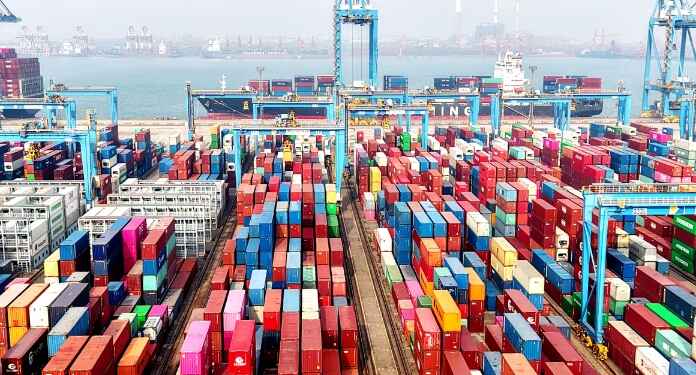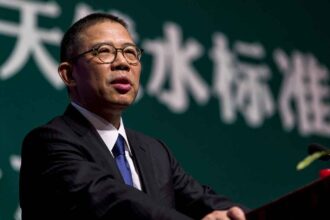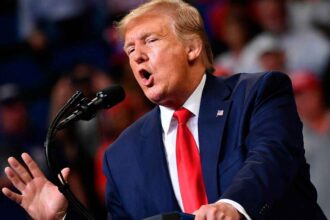China’s exports to the United States fell sharply in September, underscoring the deepening strain between the world’s two largest economies, even as Beijing recorded its strongest overall trade growth in half a year.
Official customs data released Monday showed exports to the U.S. declined 27% year-over-year, marking the sixth straight monthly drop. The decline came amid renewed tariff threats and escalating export control measures between Washington and Beijing.
Globally, however, China’s trade performance beat expectations. Total exports climbed 8.3% to $328.5 billion, the fastest pace in six months and nearly double August’s 4.4% increase. Imports also strengthened, rising 7.4% from a year earlier, a notable recovery from August’s 1.3% growth, though domestic demand remains subdued by a slowing economy and a deepening property crisis.
The improvement in global shipments highlights China’s success in diversifying its export markets as trade frictions with the U.S. intensify. Shipments to Southeast Asia jumped 15.6%, while exports to Latin America and Africa surged 15% and 56%, respectively.
“Currently, the external environment is still severe and complicated. Trade is facing increasing uncertainty and difficulties,” said Wang Jun, vice minister of China’s customs agency. “We still need to put in more efforts to stabilize trade in the fourth quarter.”
The uneasy truce between Washington and Beijing is unraveling once again. Tensions reignited Friday after U.S. President Donald Trump threatened an additional 100% tariff on Chinese goods and new export controls on “critical” software.
In retaliation, Beijing announced it would impose new port fees on American vessels, matching Washington’s move to charge Chinese ships docking at U.S. ports. China also expanded export controls on lithium-ion batteries and rare earth technologies, both key components in the global electric vehicle and semiconductor industries.
The back-and-forth threatens to derail plans for a potential meeting between Trump and Chinese President Xi Jinping later this month and raises doubts about any progress toward a broader trade agreement.
Analysts say China’s trade sector remains resilient despite mounting pressure from tariffs and shifting supply chains.
“China’s exports continue to show resilience given the low costs and limited choices for replacement globally despite the higher tariffs,” said Gary Ng, a senior economist at Natixis.
“What is more worrisome is not only tariffs but export controls,” Ng added. “If we begin to see an escalation in export controls halting supply chains, this may have a more prolonged impact.”
The warning comes as global markets watch for ripple effects across manufacturing and technology sectors that rely heavily on Chinese components. Economists say any sustained breakdown in trade relations could disrupt energy, semiconductor, and EV supply chains worldwide.
While China’s export rebound offers temporary relief to its slowing economy, escalating trade tensions with the U.S. threaten to overshadow those gains. With both sides doubling down on protectionist measures, economists warn the global economy could face renewed turbulence heading into 2025.









